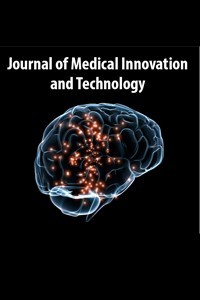Kraniosinostoz Cerrahisi ve Üç Boyutlu Baskı Teknolojisi Kullanımı
Kraniosinostoz, 3B Yazdırma
Craniosynostosis Surgery and Three-Dimensional Printing Technology
Craniosynostosis, 3D printing,
___
- 1. Wurm G, Lehner M, Tomancok B, Kleiser R, Nussbaumer K: Cerebrovascular biomodeling for aneurysm surgery: Simulation-based training by means of rapid prototyping technologies. Surg Innov 18:294–306, 2011
- 2. Tai BL, Rooney D, Stephenson F, Liao P, Sagher O, Shih AJ, et al: Development of a 3D-printed external ventricular drain placement simulator: Technical note. J Neurosurg 123:1–7, 2015
- 3. LoPresti M, Daniels B, Buchanan EP, Monson L, Lam S. Virtual surgical planning and 3D printing in repeat calvarial vault reconstruction for craniosynostosis: technical note. J Neurosurg Pediatr 2017; 19: 490–4.
- 4. Jiménez Ormabera B, Díez Valle R, Zaratiegui Fernández J, Llorente Ortega M, Unamuno Iñurritegui X, Tejada Solís S. 3D printing in neurosurgery: a specific model for patients with craniosynostosis. Neurocirugia (Astur) 2017;28(6):260–265
- 5. Jimenez DF, Barone CM: Multiple-suture nonsyndromic craniosynostosis: Early and effective management using endoscopic techniques. Clinical article. J Neurosurg Pediatr 5: 223–231, 2010
- 6. Tunçbilek G, Vargel I, Erdem A, Mavili ME, Benli K, Erk Y: Blood loss and transfusion rates during repair of craniofacial deformities. J Craniofac Surg 16:59–62, 2005
- 7. David L, Glazier S, Pyle J, Thompson J, Argenta L: Classification system for sagittal craniosynostosis. J Craniofac Surg 20(2):279-282, 2009
- 8. Di Rocco F, Arnaud E, Renier D: Evolution in the frequency of nonsyndromic craniosynostosis. J Neurosurg Pediatr 4(1):21- 25, 2009
- 9. Provaggi E, Leong JJH, Kalaskar DM: Applications of 3D printing in the management of severe spinal conditions. Proc Inst Mech Eng H 231(6):471-486, 2017
- 10. Kim JC, Hong IP: Split-rib cranioplasty using a patient-specific three-dimensional printing model. Arch Plast Surg 43(4):379– 381, 2016
- ISSN: 2667-8977
- Başlangıç: 2019
- Yayıncı: Eskişehir Osmangazi Üniversitesi
Üç Boyutlu Yazıcı Yardımı ile Transfenoidal Hipofizektomi
Ali Osman MUÇUOĞLU, Muharrem Furkan YÜZBAŞI, Ege COŞKUN, R. Buğra HÜSEMOĞLU, Ercan ÖZER
Nöroşirurjide İmplant ve İmmünite
Ceren KIZMAZOĞLU, Hasan Emre AYDIN, Orhan KALEMCİ
Meryem Cansu ŞAHİN, İsmail KAYA, Nevin AYDIN, İlker Deniz CİNGÖZ, Hasan Emre AYDIN
Kraniosinostoz Cerrahisi ve Üç Boyutlu Baskı Teknolojisi Kullanımı
İlker Deniz CİNGÖZ, Salih KAVUNCU
3 Boyutlu Yazıcı Teknolojisi İle Cerrahi Alet Üretimi; Mikro Disektör
İlker Deniz CİNGÖZ, Şafak ÖZYÖRÜK, Buğra HÜSEMOĞLU, Meryem Cansu ŞAHİN
3D Baskı Kullanarak Kişiye Özel Asetabular Labrum Kalıbı
R. Buğra HÜSEMOĞLU, Belma NALBANT, Mehmet DİLSİZ, Hasan HAVITÇIOĞLU
Gelişimsel beyin durumlarını iyileştirmek için evde nörogeribildirim ve GFCF diyeti
